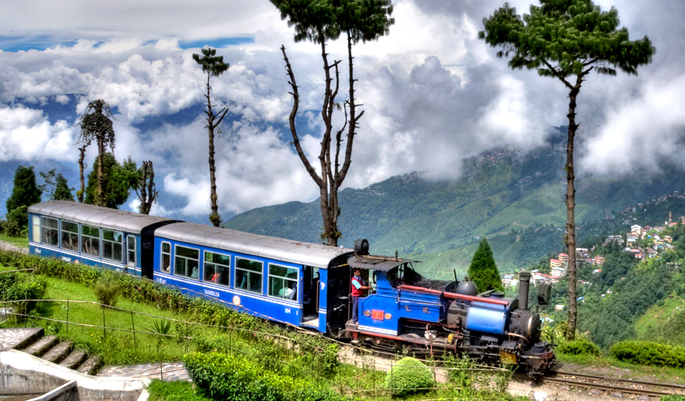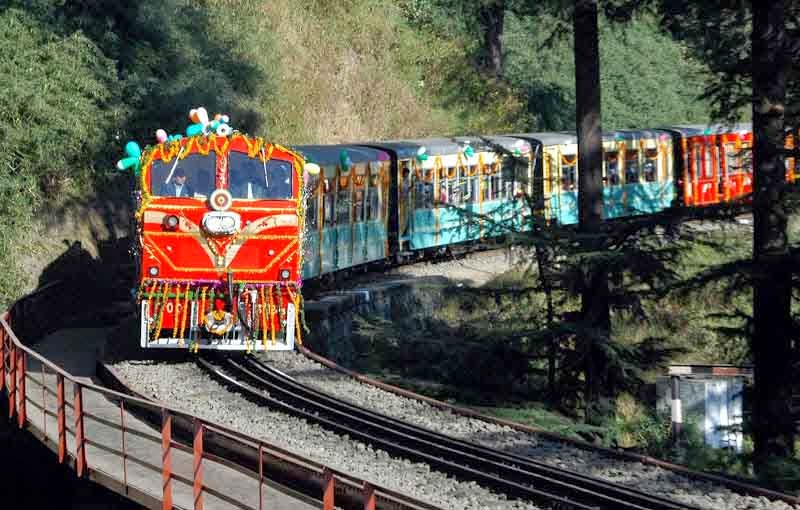Experience the joy of mountain trains in India
Constructed by the British colonial rulers as a means of getaway to the hill stations, escaping the blistering summers, the mountain trains of India are still up and running and now feature on the World Heritage list of UNESCO. A ride in any of the three gravity-defying, small trains running on narrow guage and resembling toy trains should be on your to-do list.
Charming as they may be to ride on, these trains are also marvels of fine engineering, keeping in mind that they were built over a century ago and were constructed without the tools that railways around the world use to lay tracks in difficult terrain. The marvel increases considering that the basic infrastructure built at that period has held on for over 100 years and overcome all that the harsh mountain weather could throw at it.
Besides helping the British escape the soaring summer temperatures in the plains, these three railway networks also played an important role in meeting the socio-economic aspirations of the people living in these remote areas. Also, since two of these trains run in the tea-growing areas of the country, their role in promoting tea industry and tea trade has been significant.
Now, years later, that efficient roadways have been constructed, these rail networks are more a tourist’s delight than a regular commute. Offering an unmatched scenic travel, these rides must figure on any tourist’s itinerary.
The Darjeeling Himalayan Railway (Jalpaiguri to Darjeeling)
Opened in 1881, it was the first mountain railway in India, and interestingly still retains most of its original features. Not just this, the train is the child of a monumental project that boosted the extension of the entire railway system in the country. The train passes through a series of switchbacks, tunnels, level crossings, and also loops that are a highlight of the network. It is 82 km long, climbing 400 feet (120 meters) at Siliguri- city spanning across Darjeeling and Jalpaiguri districts, to some 7,407 feet (2,257 meters) at Ghum- a tiny hilly locality in Darjeeling. From here there is a descent for four miles down a spur to Darjeeling Station 6,812feet (2,076 meters).
The Himalayan Queen (Kalka to Shimla)
This heritage railway route in the northern Indian state of Himachal Pradesh has also found a mention in the Guinness Book of World Records. Covering a stretch of 96 km through the Shivalik Range in the Lower Himalayas, the train rides 4,659 feet (1,420 meters) up through a dense cover of pine trees. Adding to the adventure are the 102 tunnels it passes through, largest of which is 3,750 feet (1,143 meters)long. The tiny train also traverses 864 bridges, many of which are viaducts with several arches emanating the vibe of the colonial era they were constructed in. Built in the late nineteenth century, the route is one of the highest in India, and the one boasting the most tunnels and bridges.
The Nilgiri Mountain Railway (Coimbatore to Udhagamandalam)
Riding for 46 km in the mountainous terrain of the southern Indian state of Tamil Nadu, this train, unlike its northern counterparts which cross mountain ranges, passes through jungles to reach its final pit-stop- the terminus at Udhagamandalam or Ooty. In the 1800s when its construction had begun, it was quite a challenge to lay this single rail-track line; so much so that it was proposed in 1854 but work on it began only in 1891. The only rack railway- track suitable for steep grades- in India, this route is one of the steepest in Asia, with its point Ooty- a popular hill station in India, at an elevation of 2,200 metres. It passes through 16 tunnels, which open to sheets of mist and clouds, and green blankets.
An outstanding example of hill railways, these three routes are mostly unperturbed, and only seasonally bothered by storms et al. All though these occasional breaks by nature leave the authorities with a fat maintenance bill, the journey goes on, for it is cherished by many.












